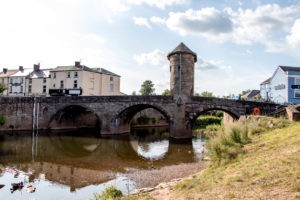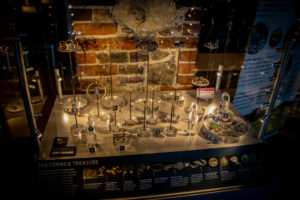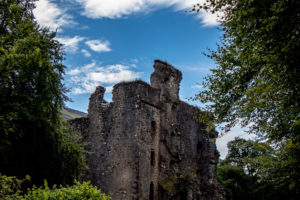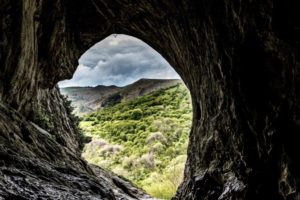Royston Cave is an artificial cave located in Katherine’s Yard, Melbourn Street, Royston, England. It is located beneath the crossroads formed by Ermine Street and the Icknield Way. It has been speculated that it was used by the Knights Templar, who founded nearby Baldock, but this is unlikely, despite its enormous popular appeal. There are numerous theories about the Cave covering Freemasons and Templars as well as possibilities that the Cave was a prison or an anchorite cell. However, none of these theories have enough hard evidence to warrant they’re being adopted by the Cave Trust.
It is a circular, bell-shaped chamber cut into the chalk bedrock. It is 8 meters high and 5 meters in diameter with a circumferential octagonal podium. The origin of this chamber is unknown. This cave is unique in Britain for its numerous medieval carvings on the walls; comparable examples exist only in former Czechoslovakia and Israel. Some of the figures are thought to be those of St. Catherine of Alexandria, St. Lawrence, and St. Christopher.
Speculations
Royston Cave has been the source of much speculation, although it is hard to determine much about its origin and function.
Knights Templar: It has been recently[when?] speculated that the cave may have been used by the Knights Templar before their dissolution by Pope Clement V in 1312.[3] Although claims have been made that this religious-military institution of the Catholic Church held a weekly market at Royston between 1199 and 1254, the market charter was in fact granted to the
Augustinian Canons of the town. It has been speculated that the cave was divided into two floors by a wooden floor, the evidence consisting of a single posthole and what may be beam slots to secure the platform to the walls. Two figures close together near the damaged section may be all that remains of a known Templar symbol, two knights riding the same horse. However, as the image has been repaired in modern times, this cannot be confirmed.
Augustinian storehouse: It has been claimed it was used by Augustinian monks from the local priory, who would have required a cool store for their produce and a chapel for their devotions. The idea that it might have been a meeting place for recusant Catholics during the Reformation of the 16th century has little to recommend it.
Neolithic flint mine: this has also been put forward as an explanation of the cave.










